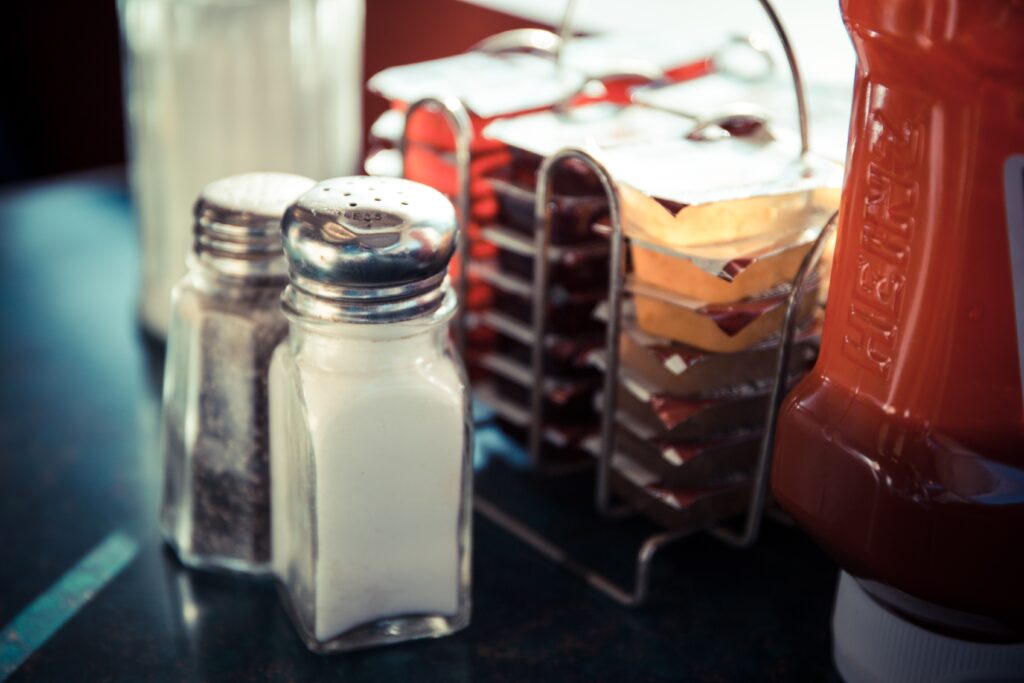
What’s our sodium situation?
Decreasing salt in the American diet has been on the national health policy “to do” list for decades. It’s true that there are individual variances in bodily responses to sodium. Even so, however, there is plentiful and strong scientific evidence linking higher sodium intake with higher blood pressure. And high blood pressure is a major risk factor for stroke and heart disease—two major causes of death.
How bad is it? The 2020-2025 Dietary Guidelines for Americans recommends 2,300 mg of sodium per day for people age 14 and older. And on average, Americans consume 3,400 mg of sodium daily—that’s a significant difference!
Which foods are the biggest sodium offenders?
According to the American Heart Association, salt added while cooking or eating isn’t the culprit. Over 70% of sodium intake in the US comes from processed, packaged, and prepared foods. And about 40% of that sodium comes from a small number of foods, including:
- pizza
- deli meat sandwiches
- burritos and tacos
- soups
- savory snacks like chips and crackers
- prepared/processed chicken
- mixed pasta dishes
- burgers
- egg dishes/omelets
Recognizing the importance of cutting the sodium in the food supply, some food companies began sodium reduction early. And to their credit, they did it on their own. In 2021, the US Food and Drug Administration (FDA) issued guidance for food manufacturers and established short-term sodium reduction goals. The intention was to help people more easily bring their sodium intake in line with health recommendations. The plan set specific sodium targets for 16 broad categories of foods and 163 sub-categories, covering the biggest sodium contributors. Following these guidelines could result in a 12% average decrease in daily sodium intake—from 3,400 mg to about 3,000 mg. The FDA continues to monitor progress using this approach.
Steps you can take to slash sodium in your diet
There’s a lot you can do to reduce your sodium intake, and change doesn’t have to be time-consuming or difficult. Here are our top tips:
- Eat more fresh and minimally processed foods, and cut back on packaged foods.
- Be a sodium sleuth when shopping. Read Nutrition Facts labels so you know exactly how much sodium is in your most frequently consumed foods. Don’t forget to check the serving size, too. You might be eating more than one serving without realizing it, which increases your sodium intake.
- Cut back on take-out food and eating at restaurants. Although the FDA sodium targets apply to restaurant as well as packaged foods, it’s still a voluntary program. As a rule, restaurant food and other prepared foods tend to be higher in sodium than food made at home. Also, nutrient information is often not available for restaurant and take-out items, making it hard to make smart choices.
- Follow the Guiding Stars on shelf tags, store brand food packages, and store signage. Sodium content is one of the factors taken into account in the Guiding Stars algorithm. Whenever possible, opt for products that have Guiding Stars versus those that don’t. And keep in mind what the Guiding Stars represent. Guiding Stars mean the product has more health-related nutrients, and less of those (like sodium) that health authorities recommend limiting.